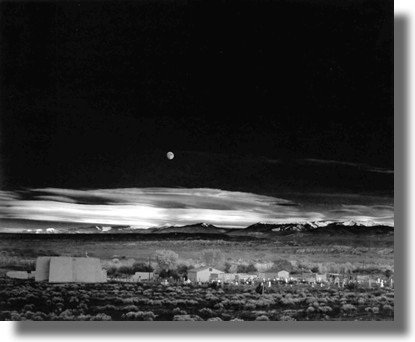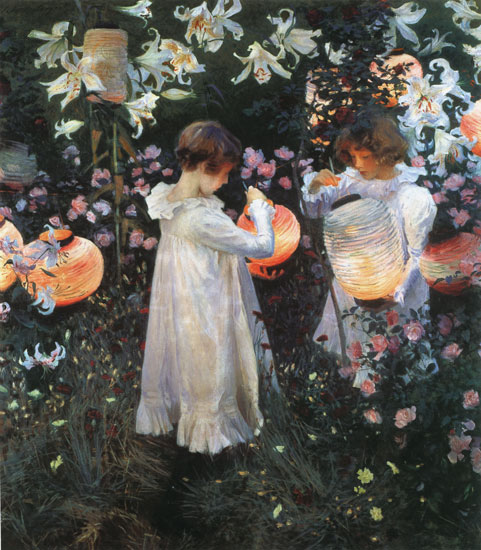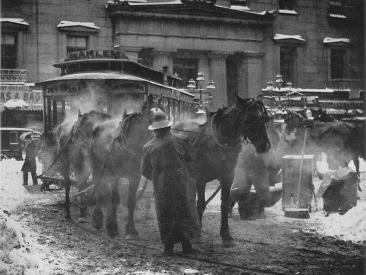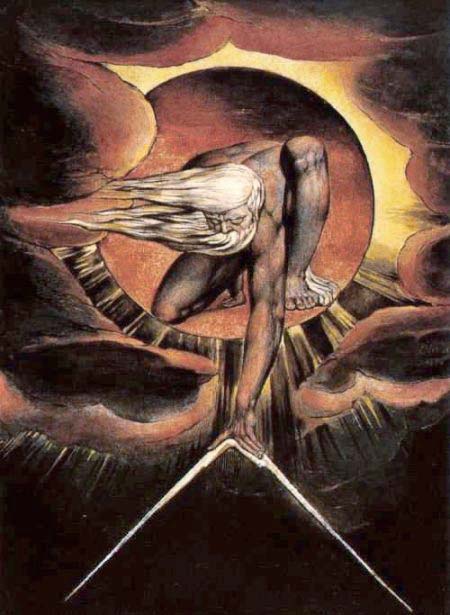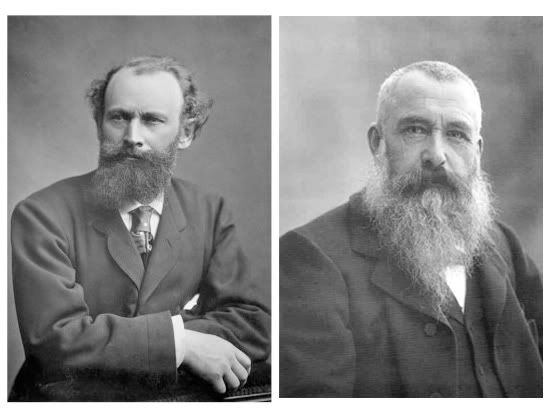Monday, November 29, 2010
The Flea -- Donne
Mark but this flea, and mark in this,
How little that which thou deniest me is;
It suck'd me first, and now sucks thee,
And in this flea our two bloods mingled be.
Thou know'st that this cannot be said
A sin, nor shame, nor loss of maidenhead;
Yet this enjoys before it woo,
And pamper'd swells with one blood made of two;
And this, alas! is more than we would do.
O stay, three lives in one flea spare,
Where we almost, yea, more than married are.
This flea is you and I, and this
Our marriage bed, and marriage temple is.
Though parents grudge, and you, we're met,
And cloister'd in these living walls of jet.
Though use make you apt to kill me,
Let not to that self-murder added be,
And sacrilege, three sins in killing three.
Cruel and sudden, hast thou since
Purpled thy nail in blood of innocence?
Wherein could this flea guilty be,
Except in that drop which it suck'd from thee?
Yet thou triumph'st, and say'st that thou
Find'st not thyself nor me the weaker now.
'Tis true; then learn how false fears be;
Just so much honour, when thou yield'st to me,
Will waste, as this flea's death took life from thee.
Image: The Ghost of a Flea by William Blake (DID YOU KNOW HE WAS ALSO AN ARTIST?)
(okay, maybe you did.)
Saturday, November 27, 2010
Gods of the Modern World -- Orozco
Why, yes, that's a skeleton giving birth to a baby skeleton. This is a mural by Orozco that can be found at the Baker Library of Dartmouth College. It is part of a larger spread known as the Epic of American Civilization.
This one is equally macabre!
Thursday, November 25, 2010
Monday, November 22, 2010
Kisses in Art
All of these famous works are entitled 'The Kiss'
or something close.
The Kiss by Rodin
The Kiss by Brâncuşi

The Kiss by Klimt
and finally, a bit steamier...

The Kiss in Bed by Henri_de_Toulouse-Lautrec
or something close.
The Kiss by Rodin
The Kiss by Brâncuşi

The Kiss by Klimt
and finally, a bit steamier...

The Kiss in Bed by Henri_de_Toulouse-Lautrec
Friday, November 19, 2010
maggie and milly and molly and may -- e.e. cummings
maggie and milly and molly and may
went down to the beach (to play one day)
and maggie discovered a shell that sang
so sweetly she couldn't remember her troubles,and
milly befriended a stranded star
whose rays five languid fingers were;
and molly was chased by a horrible thing
which raced sideways while blowing bubbles:and
may came home with a smooth round stone
as small as a world and as large as alone.
For whatever we lose (like a you or a me)
it's always ourselves we find in the sea
image: Carnation, Lily, Lily Rose by J.S. Sargent
Tuesday, November 16, 2010
Serenade for Strings -- Dvorak
For me, some resplendently beautiful themes subsume the entire work. Overall a rather "moderate" piece in some sense of the word (the first movement is even marked Moderato), in that it mainly focuses on subtler emotions evoked by a character lacking elements of the sheer grandeur and emotional range that can be present in a lot of the major Romantic works (especially late Romantic, and especially some nationalist music). All the same, the work still contains parts variegated and dynamic in character, but I will focus on the 2nd movement.
This recording is the best I've found so far, and all the other movements of the work can be accessed through the related videos. I picked the 2nd movement because it is my favorite, for a few reasons. For one, I've always been partial to certain waltzes, and this movement is marked "Tempo Di Valse," lending it that flowing, spritely graceful element characteristic of those waltzes. However, this is accompanied by a very nice implementation of a 5-bar phrase for the main theme. Secondly, the choice of 5 bars, being a bit less common in general, not only makes the piece more unique but also makes the listener (at least in my case) listen a bit more intently to keep track of the beats and phrases.
I group Dvorak with composers like Grieg, Sibelius, and Chopin as one who was able to capture the beauty and essence of their native culture and express it musically, and so I think it's important to try to bear in mind any understanding of Czech culture when listening to this music, as that is where it has its origins.
Saturday, November 13, 2010
Carl Sandburg -- "Chicago"
HOG Butcher for the World,
Tool Maker, Stacker of Wheat,
Player with Railroads and the Nation's Freight Handler;
Stormy, husky, brawling,
City of the Big Shoulders:
They tell me you are wicked and I believe them, for I
have seen your painted women under the gas lamps
luring the farm boys.
And they tell me you are crooked and I answer: Yes, it
is true I have seen the gunman kill and go free to
kill again.
And they tell me you are brutal and my reply is: On the
faces of women and children I have seen the marks
of wanton hunger.
And having answered so I turn once more to those who
sneer at this my city, and I give them back the sneer
and say to them:
Come and show me another city with lifted head singing
so proud to be alive and coarse and strong and cunning.
Flinging magnetic curses amid the toil of piling job on
job, here is a tall bold slugger set vivid against the
little soft cities;
Fierce as a dog with tongue lapping for action, cunning
as a savage pitted against the wilderness,
Bareheaded,
Shoveling,
Wrecking,
Planning,
Building, breaking, rebuilding,
Under the smoke, dust all over his mouth, laughing with
white teeth,
Under the terrible burden of destiny laughing as a young
man laughs,
Laughing even as an ignorant fighter laughs who has
never lost a battle,
Bragging and laughing that under his wrist is the pulse.
and under his ribs the heart of the people,
Laughing!
Laughing the stormy, husky, brawling laughter of
Youth, half-naked, sweating, proud to be Hog
Butcher, Tool Maker, Stacker of Wheat, Player with
Railroads and Freight Handler to the Nation.
The top image is of the Home Insurance Building built in Chicago, and considered to be the world's first skyscraper. The description of Chicago has seemed apt to many readers, and Chicagoans themselves are likely to say that their city is still "Stormy, husky, brawling," and that the Midwestern metropolis remains the "City of the Big Shoulders."
Bottom image: "The Terminal" by Stieglitz
Wednesday, November 10, 2010
"The Tiger" -- William Blake
TIGER, tiger, burning bright
In the forests of the night,
What immortal hand or eye
Could frame thy fearful symmetry?
In what distant deeps or skies
Burnt the fire of thine eyes?
On what wings dare he aspire?
What the hand dare seize the fire?
And what shoulder and what art
Could twist the sinews of thy heart?
And when thy heart began to beat,
What dread hand and what dread feet?
What the hammer? what the chain?
In what furnace was thy brain?
What the anvil? What dread grasp
Dare its deadly terrors clasp?
When the stars threw down their spears,
And water'd heaven with their tears,
Did He smile His work to see?
Did He who made the lamb make thee?
Tiger, tiger, burning bright
In the forests of the night,
What immortal hand or eye
Dare frame thy fearful symmetry?
Image: "Ancient of Days," also by William Blake. Badass.
William Blake was known to be quite a mad little creature, and his other works of art suggest further revelry and psychedelia. He inspired the title of Aldous Huxley's book "The Doors of Perception," from which Jim Morrison was inspired to name his band "The Doors." How 'bout that?
Also, be sure to read any of Blake's poems in Songs of Experience. I'll probably feature one of them in a later update; stay tuned.
Sunday, November 7, 2010
Ceci N'est Pas Magritte
^ By René Magritte, my favorite surrealist arist.
Perhaps the most arresting, however, is 'The Treachery of Images' ('La Trahison des Images'), pictured below:
means: "This is not a pipe." en la français.
I am perusing a brilliant book I own—a metaphorical tour de force called "Gödel, Escher, Bach: An Eternal Braid"—which features this image and one of many hypothetical dialogues between Achilles and the Tortoise (à la Lewis Carroll) who problematize the foundations of logic. The dialogue goes as follows:
"Tortoise: That means, "This is not a pipe". Which is perfectly True.
Achilles: But it IS a pipe!
Tortoise: Oh, you misunderstand the phrase, I believe. The word "ceci" (this) refers to the painting, not to the pipe. Of course the pipe is a pipe. But a painting is not a pipe.
Achilles: I wonder if that "ceci" [this] inside the painting refers to the WHOLE painting, or just to the pipe inside the painting."
The author proceeds to list some simple examples of self-reference in sentences:
(1) This sentence contains five words.
(2) This sentence is meaningless because it is self-referential.
(3) This sentence no verb.
(4) This sentence is false. [Epimenides Paradox]
(5) The sentence I am now writing is the sentence you are now reading.
All but the last one involve the mechanism contained in the phrase "this sentence", but they all are "floating" in the context of the English language, left up to the reader to figure out the referent of the phrase "this sentence". The whole idea is a little mind-boggling at first, but an image might help out. On one level, it is a sentence pointing at itself; on the other level, it is a picture of Epimenedes executing his own death sentence.
This is exactly what I want to do when I think about it. By the way, it is interesting to point out that the word "this" appears in the previous sentence; yet it is not there to cause self-reference, because you probably understood that its referent was the image, rather than the sentence in which it occurs.
Indeed, language is enourmously complex.
Wednesday, November 3, 2010
Manet vs. Monet
Edouard Manet and Claude Monet - many people get these two names mixed up from the similarity of pronunciation, resulting in looks of contempt from snooty Frenchmen. And really, who wants to be looked down upon by a Frenchman?
Here's a simple fix to prevent this ignorance from ever happening. Manet and Monet- A comes before O on the alphabet; Manet serves as the precursor to Impressionism, while Monet is actually credited with starting the movement.
Manet was by far the more realistic painter, noted for the controversy he created with his works. He lived during the mid-nineteenth century, a time when people were starting to reject realism in favor of more abstract portrayals. Manet has always been noted for the "flat" look to his artwork, which reduced the affects of light and shadow, and incorporated slight outlines. His subjects can be broken down into general areas and shapes, resembling the style of minimalists. In his later paintings, detail becomes more simplified, and edges become more blurry, which influenced many later artists during this time period.
Monet, most famous for his paintings of lilies, founded the Impressionist movement, which seeks to capture images as if they were fleeting memories. His style most notably contains a blurred look to them, composed of multiple brush strokes and a liberal use of colors. As an interesting, side note, Monet had cataracts during the early 1900s, which consequently affected the color schemes of his works by taking on a more reddish hue.
Impression, Sunrise, 1872
And there you go, A before O. Influence before creation. Realism before impressionism.
Subscribe to:
Posts (Atom)



